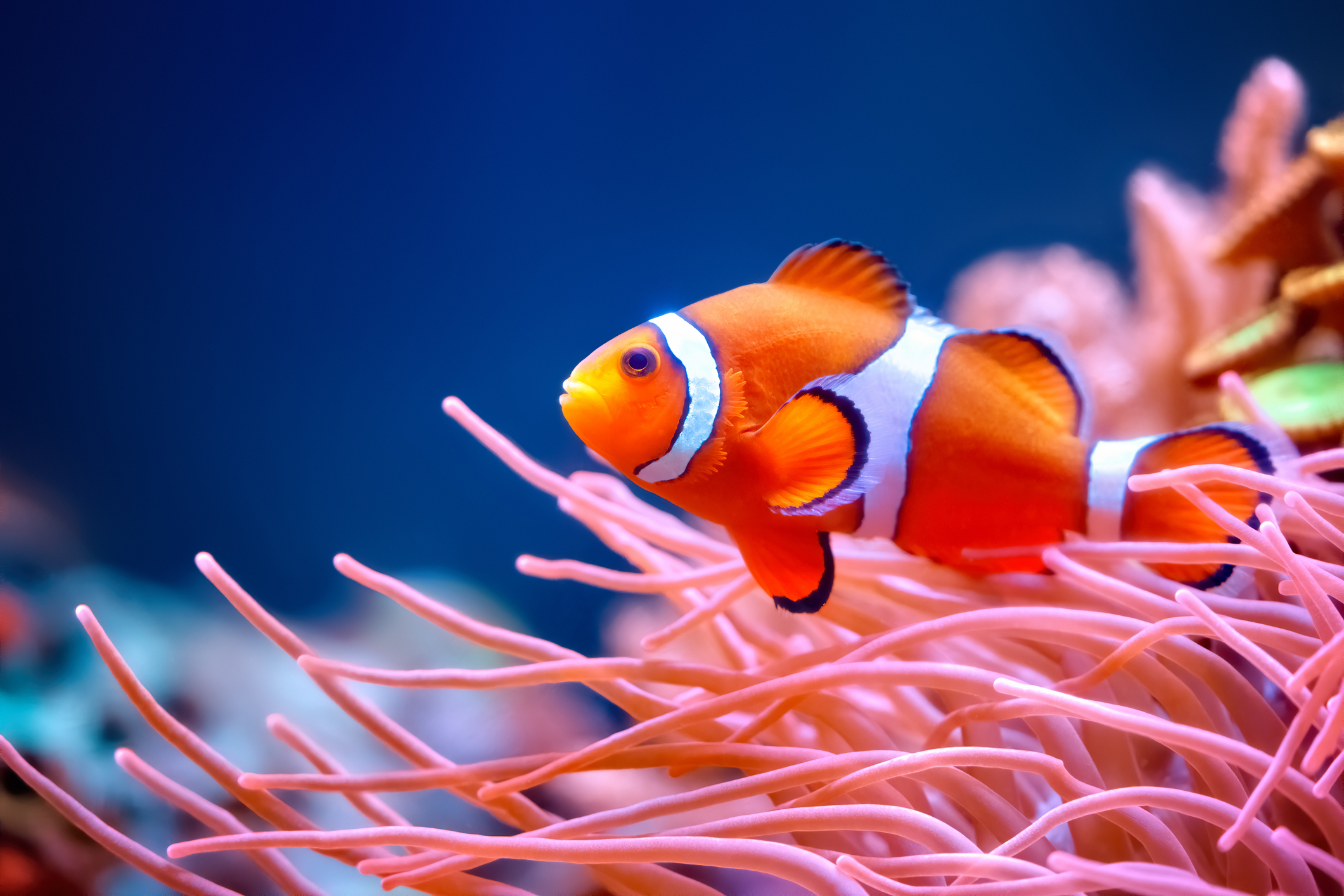
The clownfish is easily recognised, but how much do you really know about this brightly coloured and friendly looking species? Not only will you be able to see the clownfish right here at Tynemouth Aquarium, but you can learn so much more about them right here. So, let’s understand what makes a clownfish such a fascinating creature.
What is a common clownfish?
The common clownfish (Amphiprion ocellaris) is also sometimes known as the ocellaris clownfish. It is one of 30 different clownfish species, all part of the Amphiprioninae subfamily. This is a genus of ray-finned fish that includes the different types of clownfish, which are sometimes referred to as anemonefish because of their symbiotic relationship with the anemones that they call home.
What do clownfish look like?
The common clownfish is a relatively small fish, growing to around 10cm in length. They are primarily orange, with three white bands running down their body. Black lines separate their orange body and white stripes.
There is another very similar species called the orange clownfish or percula clownfish (Amphiprion percula). You can tell the two apart usually by the black bands on the orange clownfish which are more prominent.
What do clownfish eat?
Clownfish are omnivores, meaning that they aren’t particularly fussy and will eat anything! They eat both plants and other animals. Most of their diet consists of algae, zooplankton, worms and small crustaceans. Because of their small stature, other animals such as eels or lionfish are likely to snack on clownfish.
Where do clownfish live?
Clownfish are saltwater fish, and prefer to live in tropical waters. With that in mind, they live in the shallower waters of the western Pacific, Indian Ocean and Red Sea. They are not found in the Atlantic, Mediterranean or Caribbean.
They are most common in the coral reefs primarily off the coast of Australia. While the species themselves are not at risk of extinction, the reefs they call home are.
Lifecycle of a clownfish
Clownfish are always born as hermaphrodites, which means they have both male and female sexual organs. Despite this, the male parts typically develop faster which means most clownfish are male. They can switch to female if necessary, for example if something happens to the dominant female of a group.
Clownfish are monogamous, meaning they will mate for life. The female will lay eggs, anywhere from 100-1,000. The male will then fertilise the eggs afterwards. It’s the male clownfish that look after and guard the nest, and after 6-8 days the eggs will hatch. They drift for up to 10 days before settling on the coral reef floor, where they will find an anemone to live amongst.
Relationship with anemones
Clownfish have a symbiotic relationship with sea anemones. These are often mistaken for plants, but they are actually polyps that are able to sting. Clownfish live amongst the anemones, as they are covered in a layer of mucus that protects them from the anemone’s sting. In return for a safe habitat, the clownfish will provide leftovers and scraps for the anemone to feed on. The clownfish also indirectly act as bait to lure other fish towards the anemone, where they can sting and capture them.
Where can you see clownfish?
Here at Tynemouth Aquarium you can see 4 different species clownfish for yourself in our Tropical Seas exhibit!
Type
Fish
What do they eat?
Omnivore, but mostly algae, zooplankton, worms and small crustaceans
Size
Water Type
Saltwater
Where are we?
Pacific and Indian Oceans, Red Sea
